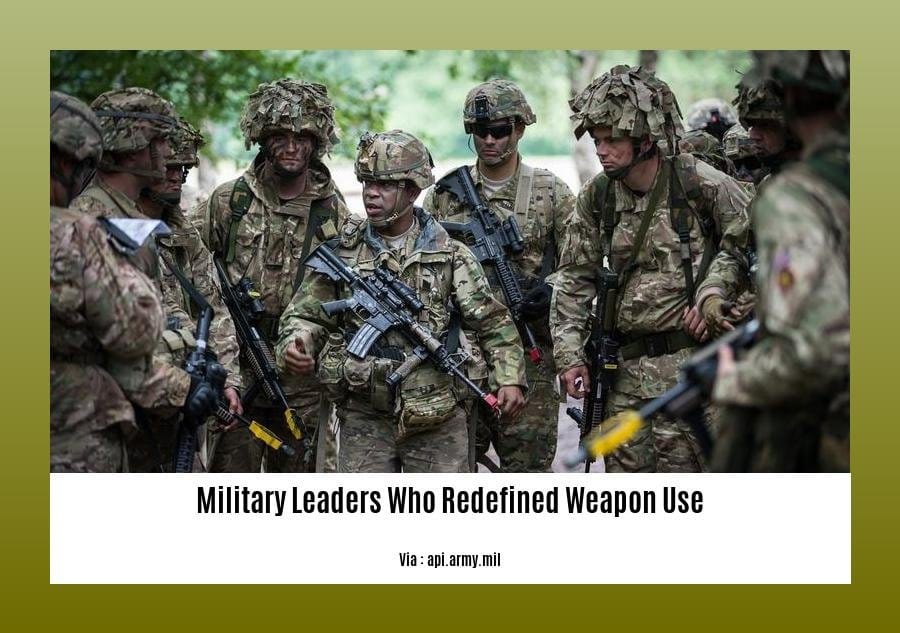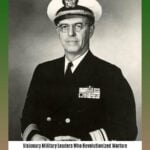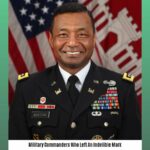In the annals of military history, certain commanders have emerged as visionaries who transcended conventional wisdom, redefining the strategies and technologies of warfare. From Alexander the Great’s innovative use of siege machines to Napoleon Bonaparte’s artillery innovations, these military leaders unleashed transformative changes in combat, forever shaping the course of conflicts. In this article, “Military Leaders Who Redefined Weapon Use: Shaping the Course of Warfare,” we delve into the lives of these extraordinary figures, exploring how their bold tactics and masterful weapon deployment revolutionized the art of war.
Key Takeaways:
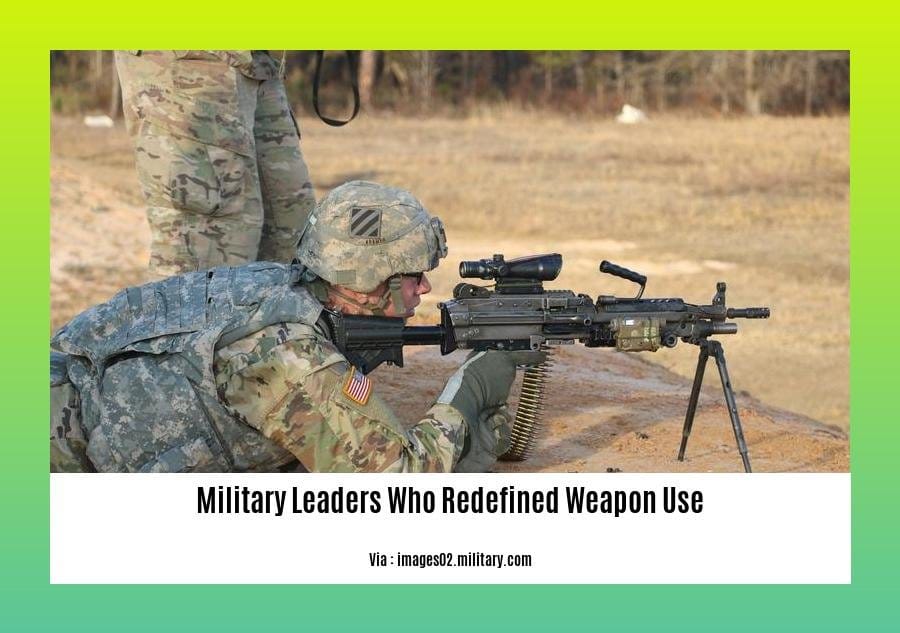
- The United States frequently threatened military action to prevent conflicts from 1948 to the 1970s.
- Israel faced heavy losses despite having skilled military leaders and American weapons.
- Ukraine is effectively utilizing resistance strategies developed by the United States.
- European defense officials are worried about a possible war, while NATO remains skeptical.
Military Leaders Who Redefined Weapon Use
Tactical Nuke Threats: A Deterrent Strategy
During the Cold War, the US employed a strategy known as “strategic alerts.” These alerts involved placing armed forces on high alert to deter adversaries. This tactic played a role in preventing nuclear war.
Lessons Learned from the Yom Kippur War
Israel’s defeat in the Yom Kippur War, despite superior weaponry and leadership, highlighted the importance of strategy. This conflict led to innovations in weapon use and tactics.
Ukraine’s Resistance Warfare
Ukraine’s successful resistance against Russia demonstrates the effectiveness of resistance warfare tactics. These tactics, initially developed by the US, have been adapted and deployed by Ukraine to great effect.
NATO Concerns Amid War Tensions
European defense leaders have expressed apprehension regarding potential war amid NATO’s skepticism. This underscores the complex and evolving landscape of modern warfare, where geopolitical tensions shape military strategy.
Advancements in weaponry are often influenced by the military commanders who push boundaries to unlock the destructive potential of these tools. Throughout history, there have been creative military weapon innovators who have introduced unconventional ideas and unorthodox new weapon concepts that have revolutionized warfare. By exploring the lives and strategies of these brilliant minds, we can gain a deeper understanding of the relentless pursuit of advancements in the field of weaponry.
Napoleon Bonaparte and the Power of Artillery
Napoleon Bonaparte: A military mastermind who revolutionized warfare, Napoleon recognized the devastating potential of artillery and incorporated it seamlessly into his strategies. Unlike his predecessors, who employed artillery as a static defensive measure, Napoleon transformed it into a highly mobile, offensive force.
Key Innovations:
Rapid Deployment: Napoleon’s artillery units were incredibly mobile, allowing them to keep pace with the fast-moving infantry. This enabled him to concentrate overwhelming firepower at critical points on the battlefield.
Precision Targeting: By carefully positioning his artillery, Napoleon could accurately target enemy formations, maximizing their destructive impact.
Impact on Warfare:
Napoleon’s innovative use of artillery transformed the face of warfare. It:
- Increased Lethality: The sheer volume and accuracy of Napoleon’s artillery fire inflicted unprecedented casualties.
- Boosted Morale: The thunderous roar of cannons instilled fear and disarray in enemy ranks.
- Enhanced Maneuverability: By neutralizing enemy positions, artillery cleared the path for infantry advances.
Legacy:
Napoleon’s mastery of artillery shaped the course of modern warfare. His tactics were widely adopted by subsequent military leaders, including Prussian General Helmuth von Moltke. Today, artillery remains a vital component of military arsenals, a testament to the enduring impact of Napoleon’s revolutionary thinking.
Key Takeaways:
- Napoleon recognized the immense power of artillery.
- He transformed artillery from a defensive to an offensive weapon.
- His innovative tactics increased lethality, boosted morale, and enhanced maneuverability.
- Napoleon’s legacy as an artillery master endures in modern warfare.
Source:
– Napoleon Bonaparte’s Use of Artillery
Erwin Rommel and the Blitzkrieg
Erwin Rommel, the “Desert Fox,” revolutionized warfare with his masterful execution of Blitzkrieg—a lightning-fast, multi-pronged assault that crippled enemy defenses. Here’s how Rommel’s tactics reshaped modern combat:
Blitzkrieg’s Power:
- Rapid and concentrated attacks overwhelmed enemy forces before they could react.
- Combined forces (infantry, armor, air support) maximized efficiency.
- Swiftly changing battle plans kept opponents guessing, leading to confusion and disarray.
Rommel’s Legacy:
- Afrika Korps: Rommel’s famed command in North Africa, where he skillfully exploited the desert terrain.
- Unexpected Victories: Despite outmatched resources, Rommel pulled off major victories against British and Allied forces.
- Influence on Modern Warfare: Rommel’s tactics inspired strategies in subsequent conflicts, including the Gulf War and the 2003 invasion of Iraq.
Key Takeaways:
- Erwin Rommel’s Blitzkrieg tactics transformed warfare with their lightning-fast strikes and combined force approach.
- Rommel’s victories in North Africa showcased the power of Blitzkrieg, despite limited resources.
- His strategies continue to influence modern military tactics and operations.
Source:
– Erwin Rommel – Biography, Facts & Death
George Patton and the Importance of Mobility
Throughout the annals of warfare, exceptional military leaders have emerged, forever altering the strategic landscape. One such figure is General George Patton, whose unwavering belief in mobility revolutionized the art of combat.
Key Takeaways:
- Patton’s “blitzkrieg” tactics emphasized speed, surprise, and concentration of force.
- He transformed the role of armored divisions, using tanks as a spearhead to penetrate enemy lines.
- Patton’s bold maneuvers, such as the breakout from Normandy, proved instrumental in Allied victories.
- His legacy endures, influencing military strategies and doctrines to this day.
Patton’s approach to warfare was rooted in the conviction that mobility was key to outmaneuvering and encircling the enemy. He believed in moving faster and more unpredictably than his opponents, exploiting their weaknesses and creating opportunities for decisive victories. Patton’s tactics proved their worth during World War II, where he led the U.S. Third Army across Europe with astonishing speed and skill.
One of Patton’s most notable achievements was the breakout from Normandy after D-Day. By swiftly moving his armored divisions inland, Patton’s forces broke through enemy lines and raced towards Germany, spearheading the Allied advance. His bold maneuvers helped to turn the tide of the war in Europe and ultimately contributed to the Allied victory.
Patton’s legacy as a military innovator extends beyond his wartime accomplishments. His emphasis on mobility and maneuver warfare has had a lasting impact on military strategies and doctrines. Today, armies around the world continue to incorporate Patton’s principles into their training and operations.
Citation:
- George Patton: The General Who Led the U.S. Army to Victory in World War II
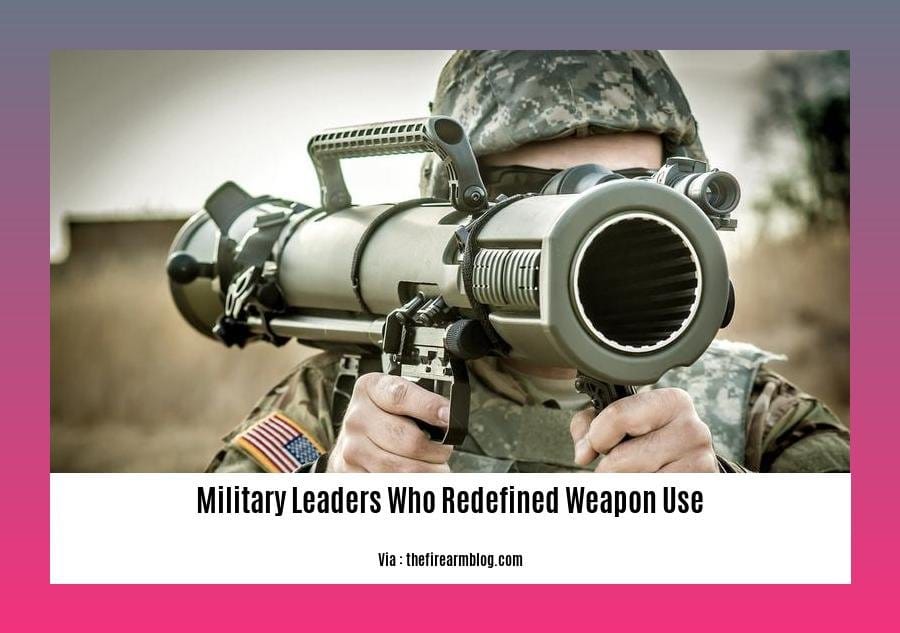
FAQ
Q1. What is the main reason for the US putting its armed forces on alert?
A1. The US regularly put its armed forces on alert to deter adversaries from 1948 to the 1970s.
Q2. What was the main cause of Israel’s loss of over 800 soldiers in a conflict?
A2. Israel lost over 800 soldiers in a conflict despite having experienced military leadership and U.S. weaponry.
Q3. What tactics are being used by Ukraine in the current conflict?
A3. Ukraine is successfully using resistance warfare tactics developed by the US.
Q4. What are the concerns expressed by European defense leaders?
A4. European defence leaders are expressing concerns about potential war amid NATO’s skepticism.
Q5. What is the key principle of Napoleon’s military strategy?
A5. Napoleon emphasized concentrating on a specific enemy force, overwhelming it swiftly, and pressing the advantage.
- Crypto Quotes’ Red Flags: Avoid Costly Mistakes - June 30, 2025
- Unlock Inspirational Crypto Quotes: Future Predictions - June 30, 2025
- Famous Bitcoin Quotes: A Deep Dive into Crypto’s History - June 30, 2025
